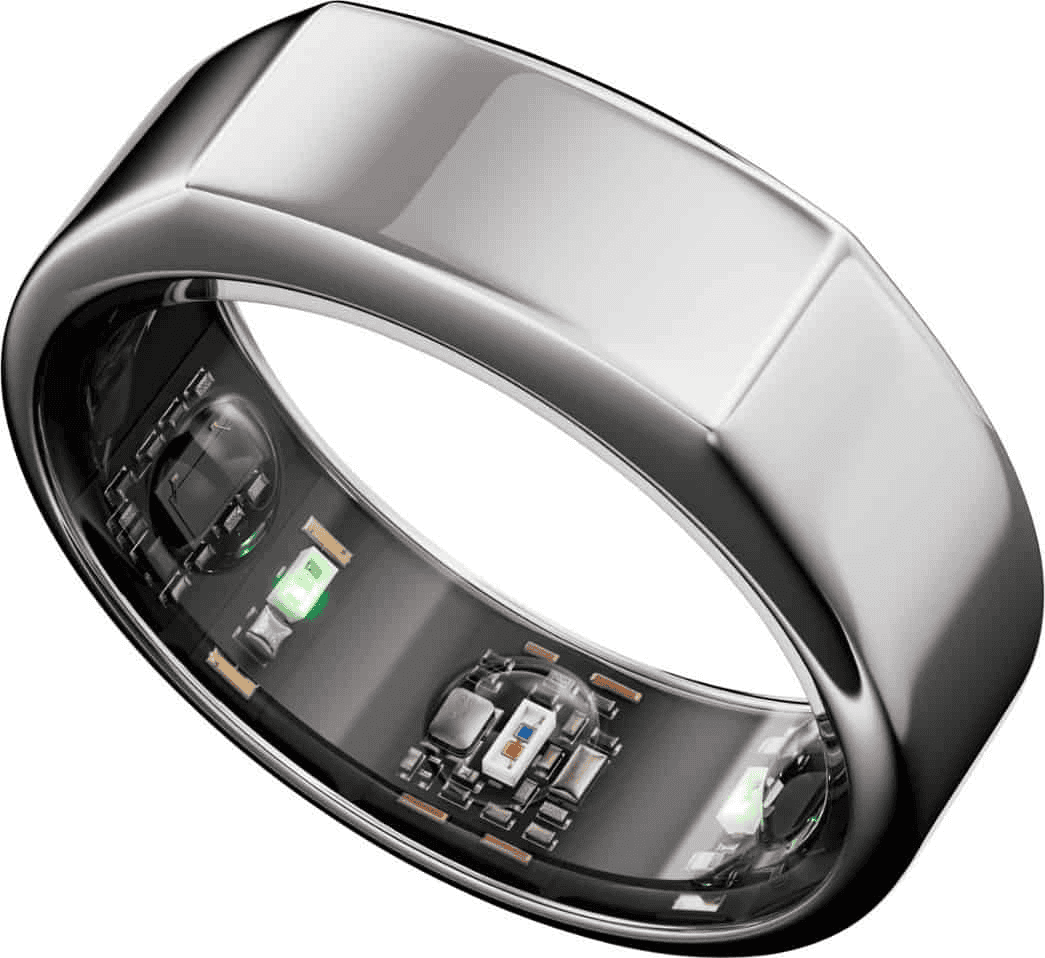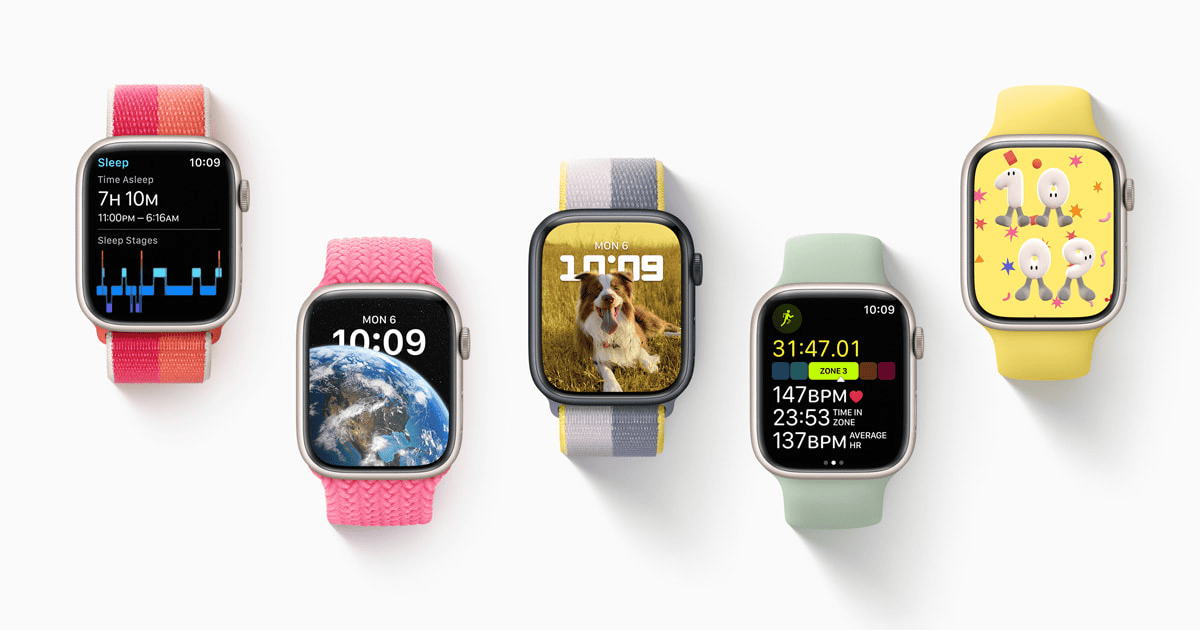Wearable technology is advancing quickly, and the future of the industry looks bright. Wearable devices now offer medical-grade insights and use AI to push what’s possible, shifting what was once considered a novelty to the forefront of health and life management. Wearables can now provide in-depth analysis and support in managing our daily lives from tracking our sleep to reminding us to take critical medications; from basic fitness trackers to devices that completely monitor our health and can spot trends that can save lives. While they’re already incredibly useful, the best news is that the future promises even greater advancements, including augmented reality integration, smart clothing, brain-computer interfaces, and energy harvesting capabilities.

However, the widespread adoption of wearables also raises ethical concerns that society must address. This article delves into the exciting possibilities and potential challenges of next-generation wearable technology, offering a glimpse into a future where technology becomes an inseparable part of our being. With individuals like John Giannandrea at the helm of AI advancements in large tech companies such as Apple, the drive for innovation is apparent. These next-generation wearables are expected to be less intrusive, more intuitive, and capable of functioning as an extension of the wearer’s body and mind. They promise to enhance personal health and lifestyle, as well as broader aspects of interaction with technology and the environment.
Beyond Fitness Trackers: The Evolution of Wearable Technology
Healthcare Revolution
Wearable technology is transforming healthcare. Smartwatches and fitness trackers now monitor heart rate, sleep patterns, and physical activity. Some even detect atrial fibrillation or measure blood oxygen levels. The future holds continuous glucose monitoring, blood pressure tracking, and early disease detection, empowering individuals to manage their health proactively.

Augmented Reality (AR) Integration
AR glasses will redefine our interaction with the world around us. Imagine directions overlaid on your view, real-time translations, or information about objects simply by looking at them. These glasses will enhance productivity, navigation, and everyday life.
Smart Clothing and Textiles
Wearable technology will become seamlessly integrated into our clothes. Smart fabrics will monitor posture, regulate body temperature, and track movement. These clothes could even change color or display information, opening a world of possibilities for fashion and function.
Brain-Computer Interfaces (BCIs)
BCIs will allow us to control devices with our thoughts. This technology has the potential to help people with disabilities, improve cognitive function, and even enable new forms of communication. While still in its early stages, BCIs represent a potential paradigm shift in human-computer interaction.
Energy Harvesting Wearables
Wearable devices will harvest energy from our body heat, movement, or even sunlight, eliminating the need for frequent charging. This will make wearables more convenient and sustainable, opening the door for continuous use and long-term health monitoring.
The Ethical Implications of Wearable Technology
The widespread adoption of wearables raises important ethical considerations. Privacy, data security, and potential misuse of information are concerns that need to be addressed as this technology becomes more prevalent in our lives. Striking the right balance between innovation and ethical responsibility will be crucial for the future of wearables.

Wearable Technology in the Workplace
Wearables are finding their way into the workplace, improving safety, productivity, and communication. From smart glasses providing real-time instructions to wearable sensors monitoring worker fatigue, this technology has the potential to transform various industries.
Wearable Technology for Enhanced Communication
Imagine smartwatches with built-in cellular connectivity or AR glasses that display messages and notifications right in your field of vision. Wearable technology will streamline communication, keeping us connected in ways we never imagined.
Wearable Technology: A Glimpse into the Future
The possibilities for wearable technology are vast and exciting. From personalized healthcare and augmented reality to smart clothing and brain-computer interfaces, the next generation of wearables will redefine how we interact with technology and the world around us. This table showcases some potential future applications:

| Technology | Potential Applications |
|---|---|
| Smartwatches | Health monitoring, communication, payments |
| AR glasses | Navigation, information overlays, gaming |
| Smart clothing | Posture correction, temperature regulation, fashion |
| BCIs | Assistive technology, cognitive enhancement, communication |
| Energy harvesting wearables | Continuous use, extended battery life, sustainability |

Wearable Tech: A Glimpse Beyond the Horizon
Healthcare Revolution in Progress
Wearables are changing how we approach healthcare. They’re not just for counting steps anymore.
Real-World Examples
- Continuous Glucose Monitoring (CGM): Devices like the FreeStyle Libre use a small sensor inserted under the skin to continuously track glucose levels, eliminating the need for frequent finger-prick tests. This is a game-changer for people with diabetes.
- ECG on Your Wrist: The Apple Watch Series 8 and later models have an ECG app that can detect atrial fibrillation (AFib), a common heart rhythm disorder. This allows users to identify potential heart issues and seek medical attention promptly.
- Blood Pressure Monitoring: Samsung’s Galaxy Watch5 series includes a blood pressure monitoring feature, although it requires initial calibration with a traditional cuff. This allows users to conveniently track their blood pressure throughout the day.
Remote Patient Monitoring (RPM)
Wearables are playing a growing role in RPM, allowing healthcare providers to monitor patients remotely. This can be particularly useful for managing chronic conditions, such as heart disease or COPD, and for post-operative care.
Mental Health Applications
Wearables can also contribute to mental health monitoring and support. Devices like the Fitbit Sense 2 track stress levels through electrodermal activity (EDA) sensors. Other wearables can monitor sleep patterns and even detect early signs of depression or anxiety based on physiological data.
Augmented and Virtual Reality (AR/VR)
AR/VR wearables are poised to revolutionize how we interact with the digital and physical worlds.
Beyond Glasses
While AR glasses like the Ray-Ban Stories and Nreal Air are gaining popularity, other forms of AR/VR wearables are emerging. VR headsets like the Meta Quest 3 and Apple Vision Pro offer immersive experiences for gaming, entertainment, and even social interaction in virtual worlds. Contact lenses with AR capabilities, like the Mojo Lens, are also in development, promising a more discreet and integrated AR experience.
Applications Across Industries
AR/VR applications are expanding beyond gaming. In education, AR can create interactive learning experiences and virtual field trips. In healthcare, AR can assist surgeons with real-time information during procedures and help patients with rehabilitation. In industrial settings, AR can provide workers with step-by-step instructions and remote expert assistance.
Challenges to Overcome
Despite the potential, AR/VR faces challenges. Cost remains a barrier for many consumers. Bulkiness and social acceptance are also concerns, especially for AR glasses. And potential health issues like eye strain and motion sickness need to be addressed for widespread adoption.
Brain-Computer Interfaces (BCIs) on the Rise
BCIs are no longer science fiction. Advancements are bringing them closer to reality.
Recent Breakthroughs
Non-invasive BCIs that use EEG or fNIRS to read brain signals are showing promise. These technologies allow for easier and safer BCI implementation compared to invasive methods that require surgery.
Key Players and Research
Companies like Neuralink, Kernel, and Facebook Reality Labs are investing heavily in BCI research and development. Universities and research institutions are also making significant strides in understanding and decoding brain signals.
Ethical Considerations
BCIs raise ethical questions about privacy, potential misuse, and the impact on human identity and autonomy. As this technology advances, it’s crucial to have open discussions about its implications and establish ethical guidelines for its development and use.
Emerging Trends in Wearables
The future of wearables is filled with exciting possibilities.
- Haptic Feedback: Wearables with haptic feedback can provide more immersive and interactive experiences. Imagine feeling a virtual object or receiving subtle cues through vibrations.
- AI Personalization: AI and machine learning are being used to personalize wearable experiences. This could include customized health recommendations, fitness plans, or even personalized content and notifications.
- Miniaturization and Integration: Wearables are becoming smaller and more discreet. They are also being integrated into everyday objects, such as clothing, jewelry, and even implants, blurring the lines between technology and the human body.
Ethical Implications: A Deeper Look
As wearables become more integrated into our lives, ethical considerations become increasingly important.
- Data Ownership and Security: Who owns the data collected by wearables? How is this data being used and protected? Concerns about data breaches and misuse of personal information need to be addressed.
- Bias and Discrimination: AI algorithms used in wearables can perpetuate existing biases and lead to discrimination, particularly in healthcare and insurance applications. Ensuring fairness and equity in these algorithms is crucial.
- Social and Psychological Impacts: The widespread use of wearables can have social and psychological impacts, such as increased surveillance, social pressure to conform, and dependence on technology.
Key Takeaways
- Wearable technology is set to offer more in-depth health monitoring and AI integration.
- The future direction includes wearables that are intuitive and integrate seamlessly into daily life.
- Advancements are led by tech innovators, indicating potential significant industry shifts.
Innovations in Wearable Technology
Wearable technology is rapidly evolving with new sensors and smarter designs. These devices get more powerful and blend into our daily lives with each update.
Advancements in Sensors and Materials
Recent strides in sensor technology have allowed wearables to become more responsive and versatile. Smartwatches can track vital signs like heart rate and body temperature with greater accuracy. The design of these devices is also advancing. Materials are becoming more flexible, allowing for a comfortable fit. This means wearables can be worn for longer periods without discomfort.
Emerging Trends in Health Monitoring
The focus on health monitoring is growing. Wearables can now keep tabs on blood pressure, glucose levels, and detect signs of atrial fibrillation through EKG sensors. These devices aim to catch health issues early. They keep a continuous check on various biomarkers that are key to our health. This gives users a detailed picture of their well-being over time.
The Role of Artificial Intelligence and Machine Learning
Artificial intelligence (AI) and Machine Learning (ML) have transformed wearable tech into personal health assistants. These technologies analyze data from advanced sensors. They spot trends and make health recommendations. They could lead to early diagnosis and personalized medicine. This use of AI and ML takes wearable technology beyond just activity tracking.
Challenges and Promises
Wearable technology is advancing rapidly. Its promise lies in enhancing health and wellbeing. Yet, it faces challenges in accuracy, reliability, and regulations.
Tackling Chronic Diseases and Public Health
Chronic diseases require continuous monitoring for effective management. Wearables are becoming key in tracking glucose levels and lactic acid. Remote monitoring through devices has also proved essential in managing public health crises like COVID-19. It has enabled healthcare providers to track infectious disease spread and stress levels without direct contact. Devices that support wound healing with real-time data can lead to proactive healthcare solutions.
Regulatory Challenges and Technological Limitations
Before wearables reach the public, they must get FDA clearance. This ensures that medical devices are safe and effective. However, some wearables struggle with reliability and accurate readings. Challenges include fine-tuning sensors for consistent glucose measurements and other health metrics. Technological limitations also arise from the small size of wearable computers. Founders and developers aim to improve communication and data processing to meet these challenges head-on.
Future Prospects and Collaborations
The future looks bright as collaborations between tech and healthcare increase. Medical device companies are working together with software developers. Their goal is to address chronic conditions better. Innovation in wearables promises new features and capabilities. Future products may offer more accurate health data and contribute to overall public health improvements. These advancements could redefine how we approach personal health technology.
Frequently Asked Questions
The future of wearable technology is unfolding with rapid advancements. This section answers questions about next-generation wearables, focusing on materials, AI, healthcare integration, trends, user experience, and privacy.
How will advancements in materials science impact next-generation wearable devices?
New materials will make wearables more comfortable, durable, and flexible. This can lead to devices that are nearly unnoticeable when worn.
What role will AI play in the evolution of wearable technology?
AI will help wearables understand and predict user needs. This means devices can offer more personalized feedback and support.
In what ways could wearable technology integrate with healthcare for enhanced patient monitoring?
Wearable devices will likely track vital signs and detect irregularities with greater accuracy. This will support doctors in providing timely care.
What are the emerging trends in wearable electronics that could shape the industry?
Smaller, more power-efficient devices are among the key trends. They aim to make daily life easier without charging constantly.
How might wearable screens revolutionize the user experience in the next decade?
Screens on wearables will improve with clarity and touch sensitivity. Users will navigate and interact with devices more naturally.
What privacy concerns should be addressed with the increasing use of wearable technology?
As wearables collect more personal data, ensuring this information is secure and private is critical. Users and manufacturers both play a role in this.
What are the latest advancements in continuous glucose monitoring (CGM)?
New CGM devices offer improved accuracy, longer sensor wear time, and integration with smartphones for easier data management.
How are AR/VR headsets being used in healthcare?
AR/VR headsets are used for surgical training, patient rehabilitation, pain management, and even treating mental health conditions like phobias and PTSD.
What are the potential benefits of BCIs for people with disabilities?
BCIs can help people with paralysis control prosthetic limbs, communicate more effectively, and regain lost sensory functions.
How can I protect my privacy while using wearables?
Be mindful of the data you share, review privacy settings, and choose wearables from reputable companies with strong privacy policies.







